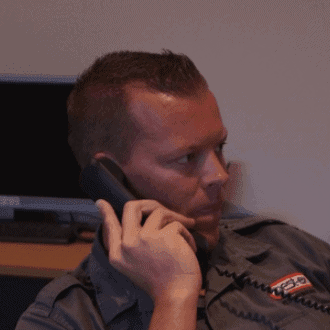
Got a Pest Problem? Call Us Today →
When summer hits Australia, it brings warm nights, humidity — and unfortunately, cockroaches that seem to take to the air. Few things are as unpleasant as a flying cockroach darting across the room or buzzing towards the light.
While it might feel like they appear out of nowhere, flying cockroaches are simply more active in hot, humid weather. The good news is that with a few preventive measures and some smart habits, you can keep them from invading your home this summer.
This guide explains why cockroaches fly, where they come from, and how to keep them out of your house safely and effectively.
Not all cockroaches fly — and those that do don’t necessarily like it. In most cases, they glide or flutter when conditions are hot and humid, or when they’re startled and looking for food or shelter.
Flying activity increases in summer because:
In Australia, the main culprits are the Australian Cockroach, American Cockroach, and Smoky Brown Cockroach — all large species capable of flight.
Cockroaches are opportunistic pests. They come inside looking for three main things: food, water, and shelter.
Here’s what commonly attracts them:
Cockroaches will eat just about anything — crumbs, grease, pet food, even paper and glue. Kitchens, bins, and pantries are their favourite spots.
Dripping taps, leaking pipes, or pet water bowls are magnets for cockroaches, especially during dry or hot spells.
Cockroaches love dark, hidden spaces like under fridges, dishwashers, cupboards, and floorboards.
Stacks of cardboard, magazines, or storage boxes provide excellent hiding and breeding areas.
Cracks, vents, drains, and open doors or windows make it easy for them to fly or crawl in.
Once inside, cockroaches multiply quickly — females can lay dozens of eggs at a time — so prevention is essential.
Keeping flying cockroaches away during summer starts with cutting off their access and removing the things that attract them. Here’s how to make your home less inviting.
Cockroaches can fit through tiny cracks and gaps, and flying ones often enter through open doors or windows.
This prevents cockroaches (and other insects) from sneaking in when temperatures rise.
The kitchen is the heart of any cockroach infestation because it’s full of food sources and moisture.
These simple habits make your kitchen far less appealing to hungry cockroaches.
Flying cockroaches love humidity. Bathrooms, laundries, and kitchens often attract them because of dampness.
Reducing moisture makes your home less comfortable for cockroaches — and also helps prevent mould and silverfish.
Cockroaches hide in cluttered spots during the day and come out at night to feed.
A clean, organised home gives cockroaches fewer hiding spots and makes infestations easier to spot early.
Cockroaches often start outside and then fly in through open windows or doors, especially at night.
By managing the space around your home, you reduce the number of cockroaches that come near it in the first place.
Cockroaches have a strong sense of smell, and while no scent is a permanent fix, some natural repellents can help deter them.
Keep in mind that these methods are deterrents, not permanent solutions — professional pest control is still the best way to eliminate infestations.
If cockroaches have already made their way inside, you’ll need to act fast to prevent them from breeding.
Place cockroach bait gels or stations in dark corners, behind appliances, and near bins. They attract cockroaches and eliminate them at the source.
Sticky traps help monitor activity and identify the source of cockroaches.
Household sprays can kill visible cockroaches, but they rarely reach hidden nests. Overuse can also make roaches scatter and spread further.
For large infestations or recurring issues, it’s best to get professional help. Licensed cockroach control technicians use safe, targeted treatments that eliminate both crawling and flying cockroaches — including eggs and larvae — while keeping your home safe for family and pets.
Cockroaches don’t bite, but they can still pose health risks. Their droppings, shed skin, and saliva can trigger allergies and asthma, especially in children. They can also carry bacteria that contaminate food and surfaces.
Seeing flying cockroaches often means there’s a larger infestation nearby. They breed quickly, and for every one you see, there may be dozens hiding out of sight.
Prompt prevention and treatment are the key to keeping them under control.
If you’ve done everything you can to keep flying cockroaches away — cleaned thoroughly, sealed cracks, fixed leaks, and removed clutter — but they still keep showing up, it’s a clear sign you need professional help. Flying cockroaches often indicate a larger infestation hidden in walls, drains, or roof spaces that household sprays and DIY traps can’t reach. A licensed pest control technician can accurately identify the species, locate their breeding areas, and apply targeted treatments designed to eliminate them, not just the ones you see.
Professional pest controllers use safe, environmentally friendly products that are effective against cockroaches while keeping your family and pets protected. They can also provide expert guidance on preventing future infestations, such as sealing entry points and maintaining moisture control. Acting early saves time, stress, and money, preventing a few stray cockroaches from turning into a full-blown summer invasion.
Flying cockroaches are an unwelcome part of Australian summers, but they don’t have to take over your home. By sealing entry points, maintaining cleanliness, and managing moisture, you can significantly reduce their appeal to them.
If you’re still spotting cockroaches despite your best efforts, don’t wait until it becomes a full-blown infestation. Contact Pest Ex pest control experts for safe, effective treatment and long-term prevention.
A few simple steps today will help you enjoy a pest-free, comfortable summer — without any unexpected visitors flying through your living room.







